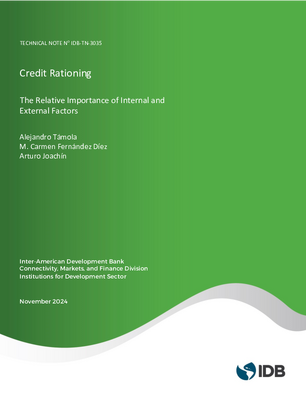Credit Rationing: The Relative Importance of Internal and External Factors
Date issued
Nov 2024
Subject
Credit Risk;
Small Business;
Debtor Finance;
Credit Market;
Fiscal Transparency;
Bank Loan;
Finance;
Forest Resource;
Credit Constraint;
Rating;
Inflation
JEL code
D22 - Firm Behavior: Empirical Analysis;
G20 - Financial Institutions and Services: General;
G28 - Government Policy and Regulation
Category
Technical Notes
Both internal and external factors can contribute to the informational frictions that drive credit rationing among firms. This study uses data from enterprise surveys and other sources to evaluate the relative contribution of internal and external variables in determining the likelihood of credit rationing. The results indicate that external factors are more important than internal ones in their association with the marginal probability of experiencing credit rationing. From these key results, we derive two policy recommendations. First, policy interventions promoting reforms to reduce inflation, decrease informality, improve firm transparency, and make judicial processes more effective are likely to reduce credit rationing. Second, while credit support programs are likely to be effective in reducing credit rationing, it is advisable to design such programs with mechanisms aimed at improving formalization and transparency.
NO



